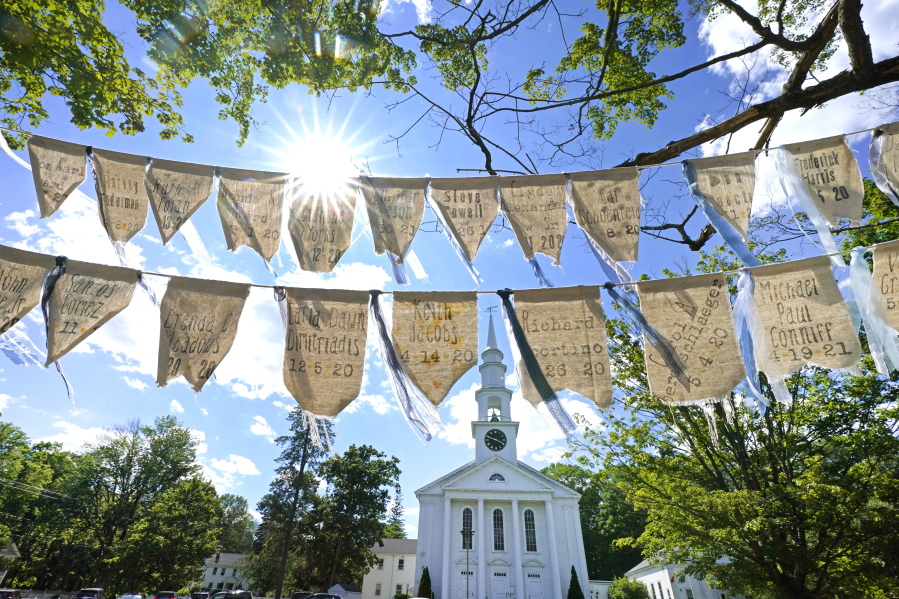CHILLICOTHE, Ohio — Ohio has planted a memorial grove of native trees to remember people who died of COVID-19, and governors and state lawmakers nationwide are considering their own ways to mark the toll of the virus.
Temporary memorials have sprung up across the U.S. — 250,000 white flags at RFK stadium in the nation’s capital, a garden of hand-sculpted flowers in Florida, strings of origami cranes in Los Angeles.
The process of creating more lasting remembrances that honor the more than 600,000 Americans who have died from the coronavirus, though, is fraught compared to past memorial drives because of the politics.
Last year, a bill kickstarting a national COVID-19 memorial process died in Congress as the Trump administration sought to deemphasize the ravages of the pandemic.
States are a good place to start with monuments given the complexities involved in remembering the federal government’s early handling of the disease, said James Young, founding director of the University of Massachusetts Amherst’s Institute for Holocaust, Genocide and Memory Studies.
“We remember not just the victims, but we end up remembering kind of the U.S. administration’s indifference or even neglect, malignant neglect, of the disease itself, much less the victims,” he said.
Non-pandemic monuments — such as the Vietnam Veterans Memorial in Washington, D.C.; the Oklahoma City National Memorial; and the National Sept. 11 Memorial in New York — resulted from negotiations among diverse stakeholders willing to push through controversy to hash out common narratives, said Nancy Bristow, a history professor at the University of Puget Sound. A national COVID-19 memorial won’t be so clear-cut, she said.
“The problem and the strength of memorials is they tell the story we want to tell, and they may not have anything to do with learning from the past or even with remembering the complexities of what we’ve been through,” Bristow said.
For governors who may be staking their political fortunes on the success of their virus response, however, the power to tell their own stories could be critical.
Ohio Gov. Mike DeWine, a Republican, and New York Gov. Andrew Cuomo, a Democrat, were among the first to seize the virus narrative with their memorial proposals earlier this year.
Last month, Democratic Kentucky Gov. Andy Beshear announced that a panel of experts from state government and the local art community had selected 11 artists to submit design proposals for that state’s permanent memorial after a money-raising campaign this spring. A state lawmaker in Maine proposed legislation there to do the same.
The COVID-19 Pandemic Memorial Grove that DeWine dedicated in April at a state park near Chillicothe, in southern Ohio, included among its native trees the white oak, which can live for 400 years.
“Maybe someone will come here and will talk about their grandmother, great-grandmother, great-great-grandmother who went through the pandemic,” DeWine said at the event. “Maybe someone in their family died; maybe someone in their family was a nurse or doctor, someone who was there to make a difference for others.”
Cuomo is regrouping after plans for a concrete state memorial to essential workers at Battery Park faced outcry from neighbors upset at the related loss of green space. He has said workers need to be remembered for their valor.
“They saved the lives of New Yorkers,” he said in announcing the panel to spearhead the project in April. “COVID was a war, and they were war heroes. They gave their lives in the midst of that war to save others.”
Bristow said the war metaphor was also used with the 1918 influenza epidemic, which arose during a real war — World War I — and that conflation ultimately overwhelmed all memory of the deadly disease, which never got a national memorial.



